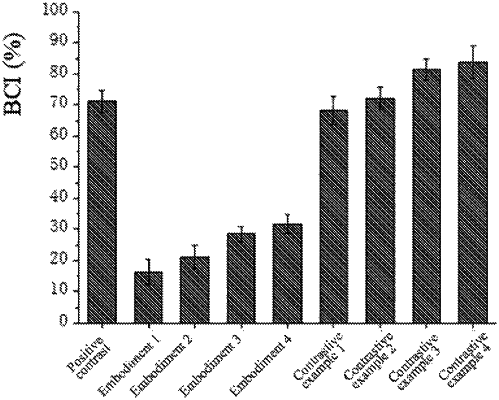| CPC A61L 15/28 (2013.01) [A61L 15/18 (2013.01); A61L 2300/418 (2013.01); A61L 2400/04 (2013.01)] | 4 Claims |

|
1. A composite material for blood clotting, wherein the composite material is formed by using the following raw materials in parts by weight: 8 to 20 parts of chitosan, 7 to 14 parts of salicylaldehyde, 8 to 16 parts of 2-aminoisonicotinic acid, 1.5 to 3.5 parts of ferrous sulfate (Fe2+ sulphate), 3 to 5 parts of a dopa compound, and 10 to 15 parts of disodium hydrogen phosphate;
wherein a chitosan-based Fe2+ complex is formed by introducing the 2-aminoisonicotinic acid onto a molecular chain of the chitosan through an acylation reaction to obtain chitosan-amino isonicotinic acid graft, forming a Schiff base by condensation of the salicylaldehyde and amino groups of the 2-aminoisonicotinic acid, and combining the Schiff base with the ferrous sulfate;
wherein the composite material comprises: a charge transfer compound formed according to the dopa ingredient and the chitosan-based Fe2+ complex;
wherein the composite material has a porous structure formed by interacting hydrogen phosphate anions of the disodium hydrogen phosphate with protonated amino groups of the chitosan to generate electrostatic and hydrogen bond effects;
wherein the composite material is in a form of solid; and the composite material forms a hydrogel after absorbing liquid;
a molecular mass of the chitosan is 50˜300 kilodaltons (KDa), and a degree of deacetylation of the chitosan is 80˜95%.
|